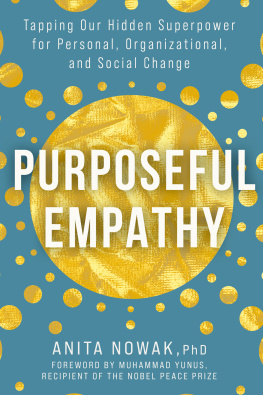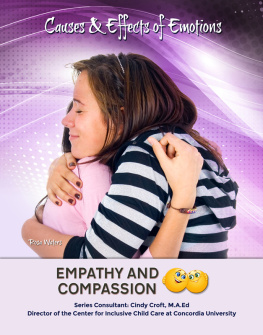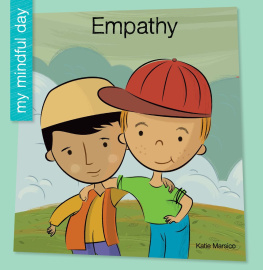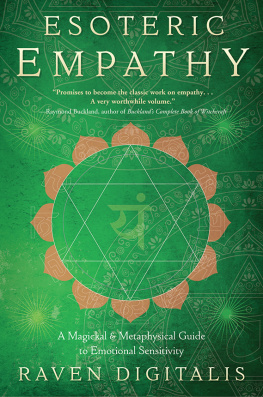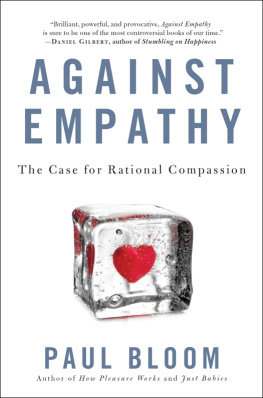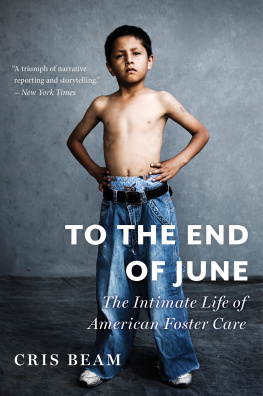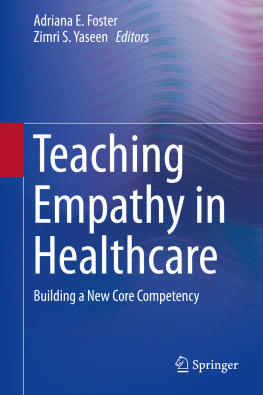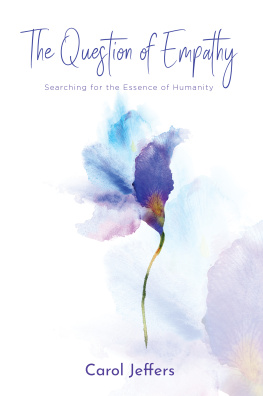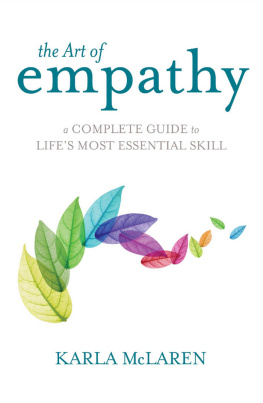EMPATHY
EMPATHY
A History

SUSAN LANZONI


Published with assistance from the Mary Cady Tew Memorial Fund.
Copyright 2018 by Susan Lanzoni.
All rights reserved.
This book may not be reproduced, in whole or in part, including illustrations, in any form (beyond that copying permitted by Sections 107 and 108 of the U.S. Copyright Law and except by reviewers for the public press), without written permission from the publishers.
Yale University Press books may be purchased in quantity for educational, business, or promotional use. For information, please e-mail (U.K. office).
Set in Janson type by Integrated Publishing Solutions, Grand Rapids, Michigan.
Printed in the United States of America.
Library of Congress Control Number: 2018934079
ISBN 978-0-300-22268-5 (hardcover : alk. paper)
A catalogue record for this book is available from the British Library.
This paper meets the requirements of ANSI/NISO Z39.48-1992 (Permanence of Paper).
10 9 8 7 6 5 4 3 2 1
For Bruce, Natalia, Conrad
Men can do nothing without the make-believe of a beginning. Even Science, the strict measurer, is obliged to start with a make-believe unit, and must fix on a point in the stars unceasing journey when his sidereal clock shall pretend that time is at Nought. His less accurate grandmother Poetry has always been understood to start in the middle; but on reflection it appears that her proceeding is not very different from his; since Science, too, reckons backwards as well as forwards, divides his unit into billions, and with his clock-finger at Nought really sets off in medias res.
GEORGE ELIOT , Daniel Deronda
The failure of earlier psychologists and philosophers to make empathy the prime philosophical project of modernity opened the door to its becoming exactly that.
MARK JARZOMBEK , Psychologizing Modernity
Contents
Preface
I T WAS N OVEMBER 2004, and I was rushing through the New Haven station to board an evening train, returning home to my young children in Boston from my visiting teaching post. I paused at a newsstand to pick up O magazine and discovered an interview with recently elected United States Senator Barack Obama. He worried about Americas empathy deficit, he told Oprah, more than the trade or budget deficit. He had always urged his students to try and look out through anothers eyes, declaring, We have to build a society on the belief that you are more like me than different from me.
This call for empathy caught my eye, as I already knew from my dissertation research that the English wordempathyfirst appeared only in the early years of the twentieth century as a translation of the German Einfhlung. Einfhlung, or in-feeling, was a central concept in German aesthetics and captured a viewers projection of feeling and movement into paintings, objects of art, and nature.
As I hurried through that train station, I pondered the path from Einfhlung, with its surprising aesthetic meaning, to its early English translation, and then to its use in contemporary American culture. My research subsequently revealed that psychologists disagreed as to how to translate the German term, and empathy emerged as one among a number of alternatives. Empathy, as well as its precursor, Einfhlung, possessed multiple meanings. I followed the threads of empathys varied definitions, conceptualizations, and practices through the fields of art, psychology, social science, psychiatry, and psychotherapy, ending up in the neuroscience of today.
As I complete this book, the empathy deficit seems larger than many of us had imagined even a decade ago. Obama counseled then that in matters of empathy images, actions and stories always speak the loudest. In tracking and telling the many stories of empathy over the past century, I have discovered that empathy has been a tool, a technique, a practice, and an aspiration. It has enlisted the body and feeling as well as thought and the imagination. Empathy has sometimes relied on self-expression, and at other times on self-restraint. Although its dimensions are still vigorously debated, empathy links us to other beings and to things, and it is as vital today as it was a century ago.
Acknowledgments
T HIS BOOK TOOK SHAPE over a number of years. In it I have drawn together ideas and inspiration sparked by many scholars and mentors during my doctoral studies in the history of science, psychology, and neuroscience. I am greatly indebted to my history of science mentors: Peter Galison, who taught me to interweave history with philosophy; Anne Harrington, who inspired me to study the history of psychiatry and neuroscience; and Robert Brain, whose investigations of aesthetics and science were formative. Other professors who taught me the tools of the historical trade include Robert Martenson, Paula Findlen, Alfred Tauber, and Allan Brandt. I would also like to extend my gratitude to my professors at the Harvard Divinity School: Francis Fiorenza, Margaret Miles, Larry Sullivan, and Richard Niebuhr, who nurtured my interest in world religions, hermeneutics, and philosophical pragmatism.
This history could not have been written without the crucial assistance of the following archivists and librarians, who were extremely generous with their time and attention: Pat Burdick, Miller Library, Colby College, Waterville, Maine; Adam C. Green and Sandy Paul, Trinity College Library, University of Cambridge, Cambridge, England; Eleanor Brown, Division of Rare and Manuscript Collections, Carl A. Kroch Library, Cornell University, Ithaca, New York; Pauline Adams, Somerville College, Oxford University, Oxford, England; Lizette Royer Barton, Center for the History of Psychology, University of Akron, Akron, Ohio; Dr. Christopher Hilton, Wellcome Library, Welcome Trust, London, England; Jack Ekert, Center for the History of Medicine, Francis A. Countway Library of Medicine, Boston, Massachusetts; Stephen Horrocks, Karnes Archives and Special Collections, Purdue University, West Lafayette, Indiana; Rebecca Y. Martin, Monroe C. Gutman Library, Harvard Graduate School of Education, Cambridge, Massachusetts; Sarah Hartwell, Rauner Special Collections, Dartmouth University, Hanover, New Hampshire; Arlene Shaner, Historical Collections, New York Academy of Medicine Library, New York, New York; Sara Keckeisen, Kansas Historical Society, Topeka, Kansas; Rachael Dreyer, American Heritage Center, University of Wyoming, Laramie, Wyoming; Tom McCutchon, Columbia University Rare Book and Manuscript Library, New York, New York; Lewis Wyman, Manuscript Division, Library of Congress, Washington, D.C. Thanks also go to Rosalind Dymond Cartwright for interviews and comments on drafts, and to Michael G. Allport, Robert G. Hoskins and Roger Taft for permission to cite material from the unpublished writings of Gordon Allport, Roy Hoskins, and Jessie Taft.
The research for this book was funded by a National Science Foundation Scholars Grant awarded to me for The Emergence of Empathy, Award No. SES-0750603. This grant provided support to conduct research and to visit historical archives. As I pursued various threads in empathys history I greatly benefited from the skills of three efficient and engaging research assistantsSteven Randy Anderson, Daniel Dempski, and J. Juniper Friedmanwho collected and reviewed material for this project while they were students at the Harvard Extension School. Thanks also go to the Newhouse Center for the Humanities at Wellesley College for providing a yearlong research and writing fellowship, and for the good company and inspiration of humanities scholars there, among whom Rebecca Bedell, Ling Hon Lam, Eva Hoffman, and Carol Dougherty were particularly helpful.
Next page

